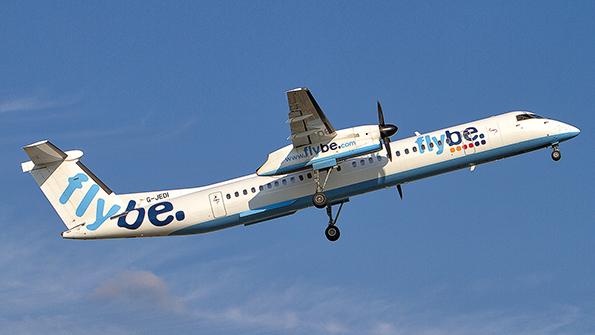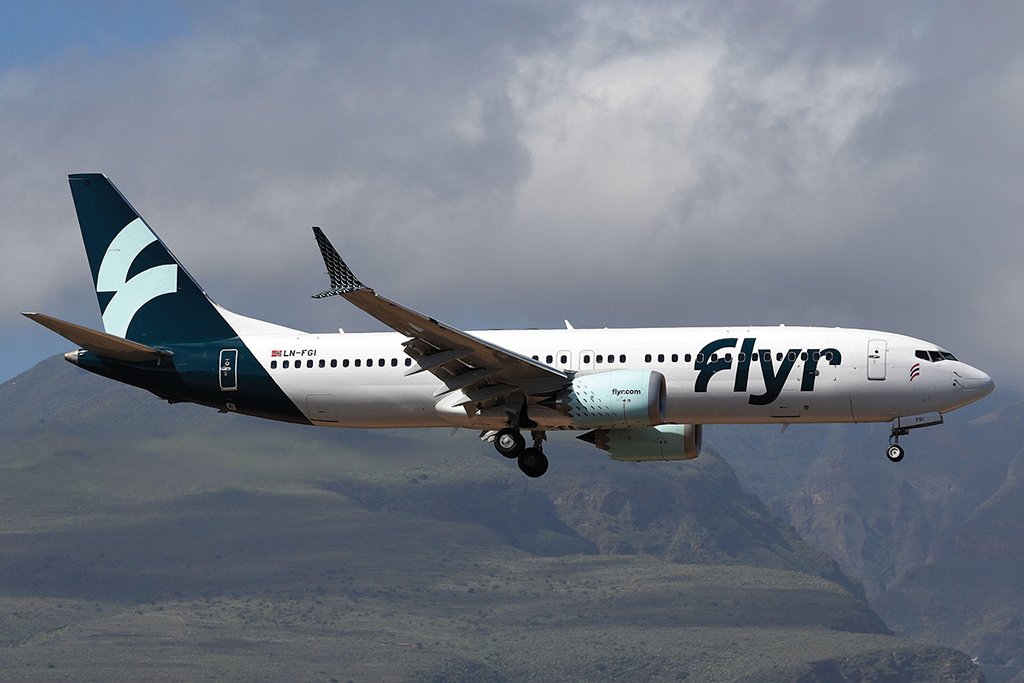
Flybe’s latest incarnation lasted less than a year.
Europe’s low-cost carriers have been celebrating strong quarterly results, but their positive performance comes against a backdrop of two airline collapses in a matter of days–UK regional Flybe and Norwegian low-cost carrier Flyr—that highlight the very different fortunes within the sector.
Ryanair was the last of the three major European low-cost carriers (LCC) to report results. On Jan. 30, the carrier expressed optimism, as budget carriers shrug off the cost-of-living crisis and high oil prices, forecasting strong bookings in the coming weeks and months.
- Flyr, Flybe suspend flights within days of each other
- Ryanair CEO predicts start of consolidation wave
Ryanair CEO Michael O’Leary has also said a wave of consolidation is on the horizon. “We are definitely, post-COVID, entering a four or five-year period of consolidation,” he told Reuters on Feb. 1.
With a Lufthansa deal to buy a minority stake in ITA Airways finally moving forward and the aforementioned two airline collapses within a matter of days, it certainly seems that the consolidation wave O’Leary spoke of is underway.
His comments came the same day that Norwegian LCC Flyr grounded flights and filed for bankruptcy. The company had launched service just over a year and a half earlier in June 2021, operating a fleet of six Boeing 737 MAX 8s and six 737-800s to domestic and European destinations.
But a combination of the effects from COVID-19 and weak domestic demand were too much for the carrier, which struggled to navigate a backdrop of high oil prices and high inflation that has been making life difficult for all European airlines—and impossible for some.

Credit: Robbie (Robert) Shaw/Alamy Stock Photo
Late last year, Flyr set out a plan to slash costs by furloughing half of its workforce and securing a wet-lease deal. But the wet-lease plan fell through after it failed to secure the necessary funding, and the company’s efforts were ultimately not enough to save the airline.
Flyr’s collapse came just days after that of Flybe, whose latest incarnation—after an April 2022 relaunch—lasted less than a year. The UK regional airline went into administration on Jan. 28. The administrator of the carrier, which operated a fleet of eight De Havilland Canada Dash 8-400 aircraft, cited the late delivery of 17 aircraft needed for its schedule as one of the factors leading to its demise, severely compromising its capacity and ability to remain competitive.
At the opposite end of the European spectrum, the region’s other LCCs are strong and growing stronger.
EasyJet highlighted strong booking trends and said it was on a path back to full-year profit when it reported quarterly results Jan. 25, with CEO Johan Lundgren citing “early indications of a strong Easter.”
Wizz Air, issuing its own quarterly results the next day, said it was seeing continuing evidence of a solid fare environment, with average fares trading above 2019 and 2022 levels.
“We expect to see the load factor gap continue to close versus 2019 in the coming quarters as our recent network investments start to mature,” Wizz Air CEO Jozsef Varadi said. “As we reach the end of January, we are seeing booking volumes coming in ahead of 2022, which is in line with expectations. We remain optimistic.”
Ryanair said it operated 112% of its pre-pandemic capacity in the first nine months of its fiscal 2023, which runs through March 2023, but the Dublin-based LCC does have one thing in common with Flybe: concerns over whether it will have enough aircraft capacity to keep up with its growth plans, albeit on a different scale.
The carrier posted a net profit of €211 million ($230 million) for the three months through the end of December, highlighting growing market share in many markets and a “robust” demand outlook when it presented third-quarter results on Jan. 30.
But Ryanair once again noted the question mark over its 737 MAX deliveries.
The carrier received 11 new 737 MAX aircraft—which Ryanair dubs “Gamechanger” for their lower fuel consumption coupled with higher capacity—during the last three months of 2022, taking the total number of that type to 84 in an overall fleet of 523 aircraft. The budget carrier has announced over 230 new routes for its 2024 financial year, which runs from April 2023 to March 2024, making for a total of 2,450 routes with 3,200 daily flights.
O’Leary has previously expressed frustration at Boeing delivery delays, but the airline is now receiving MAXs. Ryanair is not planning to start retiring its older 737-800s until 2026, with current growth opportunities meaning it does not make sense to retire them yet, he told Aviation Week in a recent interview.
The company is basing its growth plan for fiscal 2024 on having 124 737 MAXs in its fleet for the peak summer 2023 season.“Although there is a risk (despite recent Boeing production improvements) that some of our Gamechanger deliveries could slip,” Ryanair said.
It may be frustrating that fleet growth cannot go faster, but Ryanair is in the camp of European airlines that seem to have put COVID-19 firmly behind them: posting strong market-share gains, including an increase in Italy from 26% to 40%; and confirming a recently raised profit outlook for its full financial year, which ends in March. If O’Leary’s consolidation prediction turns out to be true, the gap between those strong performers and the weaker carriers may become even more evident in the coming months.





